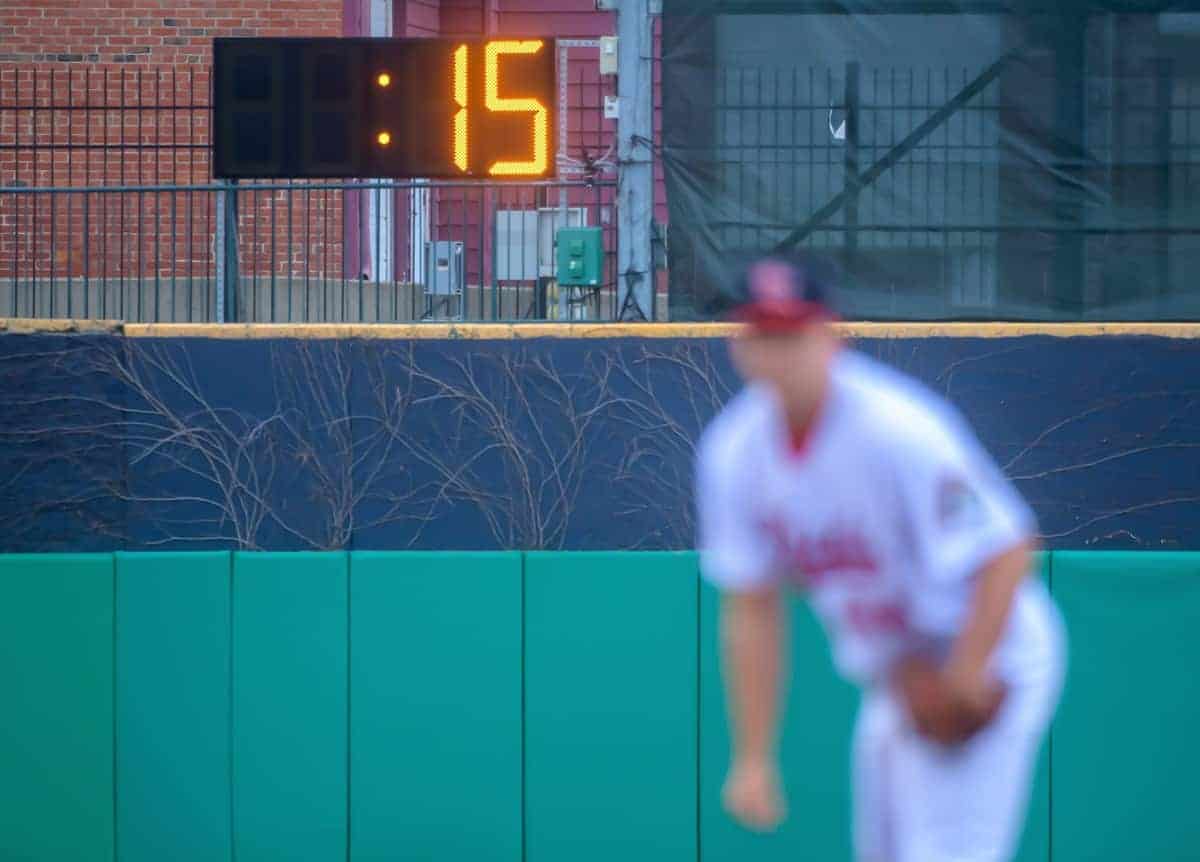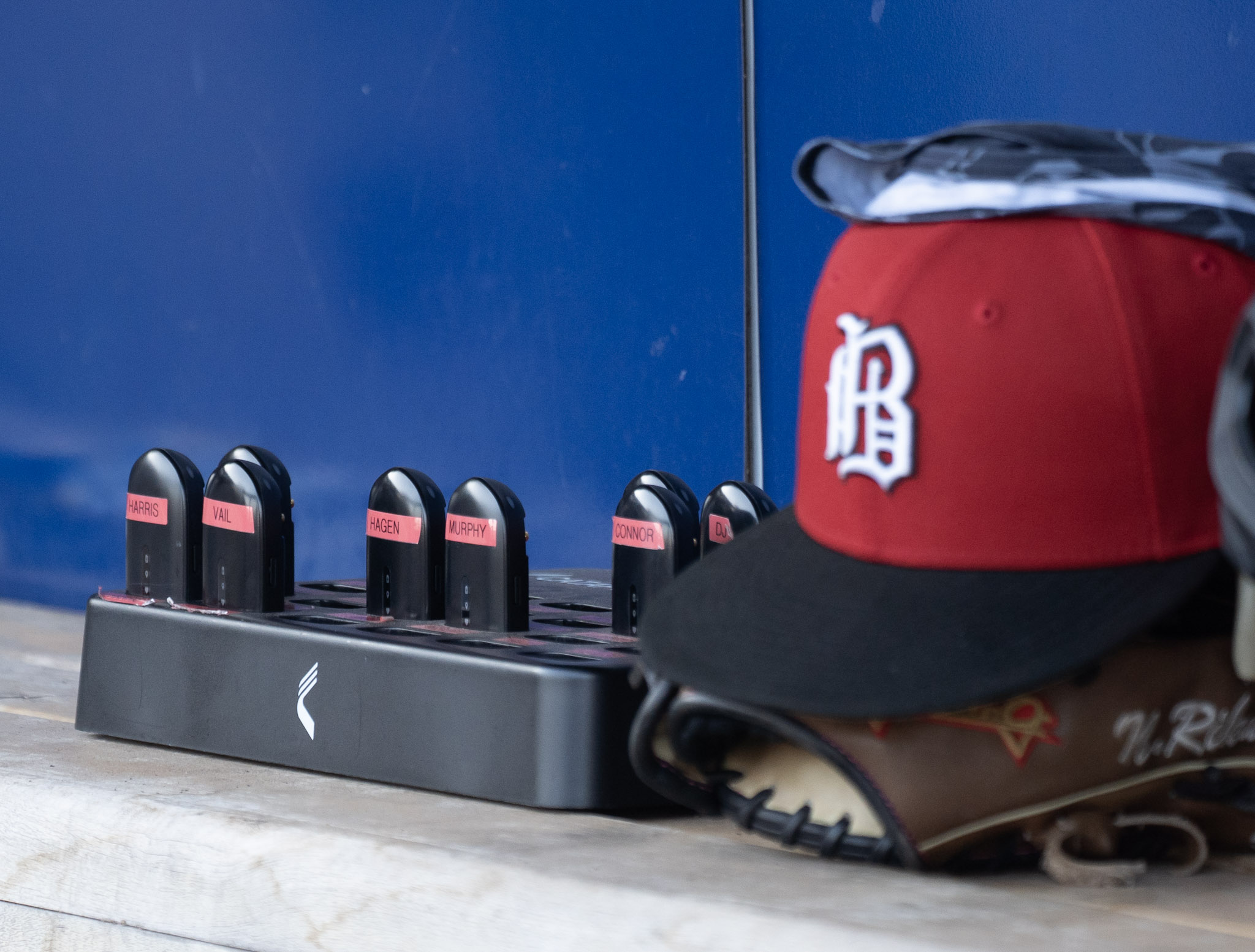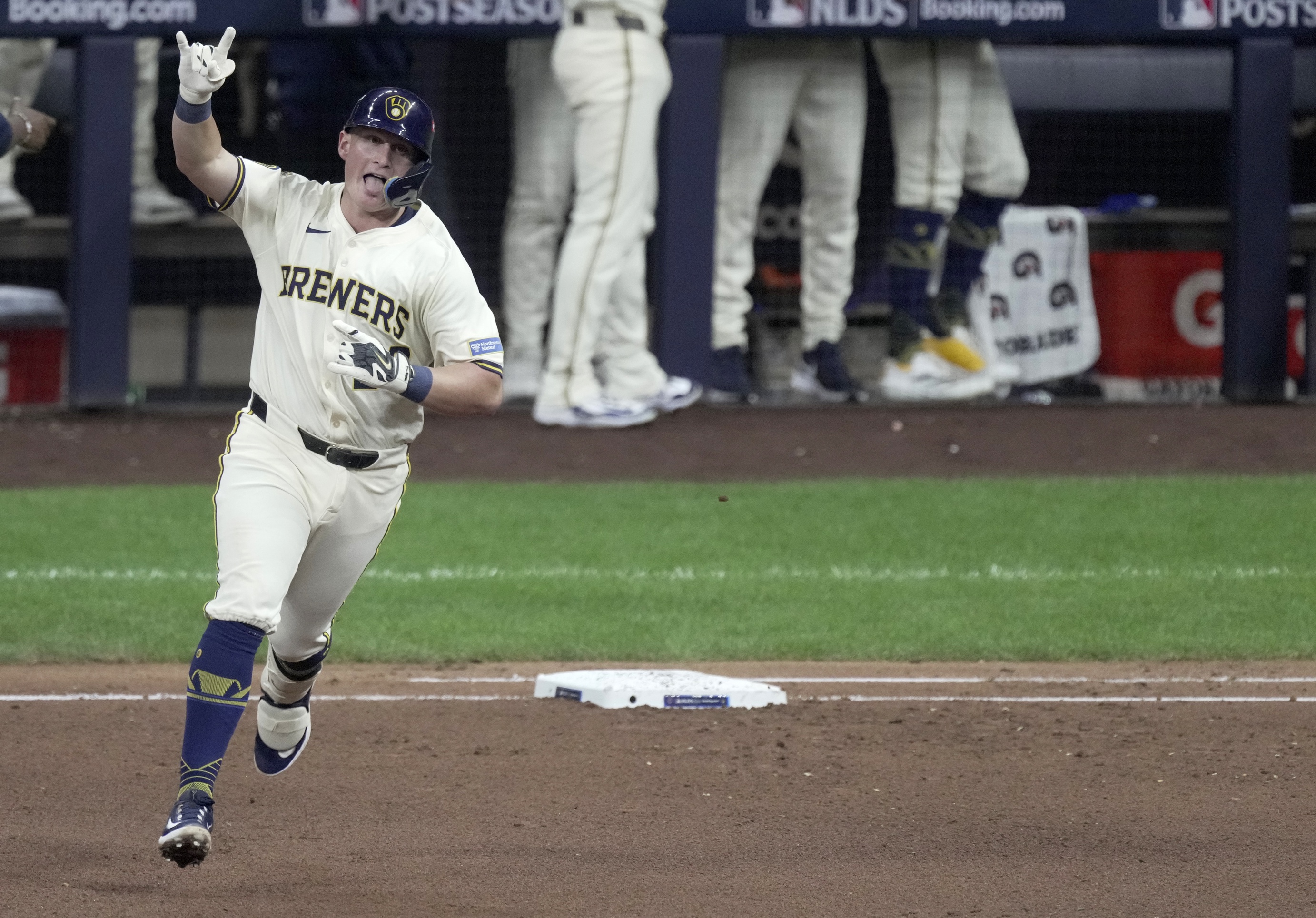There’s every indication that the MILB pitch clock is coming to the big leagues next year. We know how many players feel about it. But what do the pitch-clock operators themselves think? Some of their insights will surprise you.
Zak Gonzalez and Brad Kopp are among the pitch-clock operators for the Charlotte Knights, and also two of the best baseball minds in the press box. They recently shared their thoughts on the impact of the pitch clock. Here are the highlights:
*They routinely meet with umpires before and after each game to prepare and debrief, and also have a walkie-talkie to communicate with one of the base umpires during the game. The supervisor of MILB umpires is routinely at Knights’ games now and is constantly interacting with the clock operators as well. And Zak and Brad receive weekly emails that go into greater detail on unique situations that arise.
*There are three clocks in every ballpark — one in centerfield that the umpire, batter and catcher can see, and one by each dugout that the pitcher and fielders can see. Each dugout also have tablets so they can see the where each pitch crosses the batter’s box. On Tuesday night, the Knights also began posting the pitch box on its scoreboard so fans can see it (though the vast majority have no idea the umpire is not calling the game).
*In 14 seconds, assuming no one is on base, the pitcher has to begin his delivery — as opposed to just coming set — while the batter must be in the box and ready for the pitch at the nine-second mark. The window increases to 19 seconds with a runner on base.
*Zak believes pitchers are having a tougher time than hitters with the clock and looking for all kinds of ways to slow things down. They occasionally try stepping off the rubber, but the umpire doesn’t reset the clock when that happens, if there are no runners on base. If there is a baserunner, the pitcher can step off or throw to first twice. If there is a third attempt, and it is unsuccessful, a balk is called.
*If a pitcher has to cover first base, he must then hustle back to the mound, catch his breath and then throw another pitch, with the clock re-starting as soon as his foot hits the dirt on the mound. Sometimes, Zak said, pitchers will walk up to the mound but stay on the grass a few extra seconds to try to slow things down.
*With just 14 seconds, Brad doesn’t think a pitcher can shake off the catcher more than two times.
*It is hard to know, Brad said, how MLB players will react. Brad recalled going home after running the pitch clock one particular night and watching the Yankees play the Orioles on TV. Upon seeing Aroldis Chapman take 42 seconds between pitches, he thought to himself that there’d be no way the Yankee closer could ever get his routine down to 14 seconds.
*Taken one step further, he recalled a discussion on the MLB Network during which an analyst observed that teams will have to consider how effective certain pitchers will be with a pitch clock before signing them as free agents.






